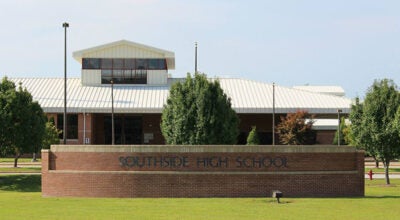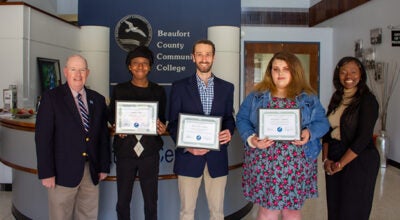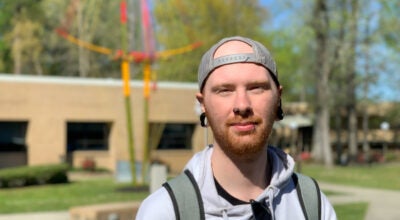Modernists in the making
Published 8:44 pm Friday, January 24, 2014
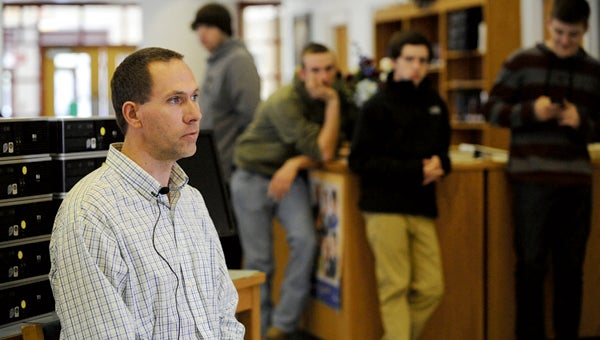
VAIL STEWART RUMLEY | DAILY NEWS
PROJECT BAUHOW: David Dixon, Washington High School’s drafting instructor, describes what the new computers will mean as his drafting class students look on. Dixon applied for, and received, computers for his class through the non-profit North Carolina Modernist Houses’ Project BauHow.
One lucky class walked out of Washington High School Friday afternoon with new computers, courtesy of an organization dedicated to preserving, promoting and archiving Modernist architectural design in North Carolina.
The connection between WHS 9th- and 10th-grade students and the non-profit North Carolina Modernist Houses may not be immediately obvious. But it’s there, in Project BauHow, NCMH’s educational outreach effort to inspire students to study, and perhaps in the future, create, Modernist residential architecture — a style exemplified by renowned architect Frank Lloyd Wright.
For the third year, Raleigh-based NCMH has selected three schools for the project, each in a different part of the state.
According to George Smart, creator of Project Bauhow, NCMH targets schools based on need: underserved areas; a population that may not have Internet access; places where the design industry doesn’t have a strong presence.
For 2014, WHS was the final school chosen. The two others are Rolesville High School in Rolesville, located in central North Carolina, and McMichael High School in Mayodan, in the western part of the state.
To each of these schools’ drafting students, NCMH has extended a helping hand by giving the schools computers and access to design software — Computer Aided Design (CAD) — which, in turn, are sent home with the students. The computers do not have to be returned; they are the students’ to keep.
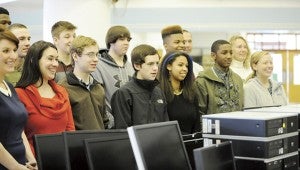
NEW HARDWARE: Students in David Dixon’s drafting class at Washington High School eye the new computers they get to take home, and keep, to work on drafting projects, courtesy of Project BauHow.
“North Carolina high-school drafting teachers generally can’t give drafting homework because up to 60 percent of high-school students in the state don’t have a computer at home or one powerful enough to handle CAD software,” Smart explained. “That means skills practice in drafting classes can only progress during class time, severely limiting student learning through meaningful homework assignments and additional skill-building.”
WHS Career and Technical Education faculty member, and drafting teacher, David Dixon, said his drafting students get only 1 1/2 hours of practice on CAD each semester. Enter Dixon’s application for Project BauHow and the sponsorship of Smart Homes + Businesses in neighboring Greenville, which provided the funds for the computers. Now Dixon’s students will be supplied with the critical hardware and software that allow them to practice — and virtually build.
According to Jerry Tester, with Smart Homes + Business, the company’s sponsorship is a recognition of the fact that high-school students need to be prepared to enter the work force. Sometimes that means practice with tools not immediately available.
“As a technology company, we’re very aware of the need for young people to learn and follow their creativity,” Tester said.
Chris Norfleet, a sophomore drafting student, and one of the computer recipients, said he has plans to go into a field where CAD expertise is required; Dequan Blount, also a sophomore, said having the computers to work on at home is a “great opportunity.”
NCMH’s involvement with the WHS drafting students doesn’t end with the delivery of the computers. In early May, each student will submit a Modernist house design to NCMH’s annual George Matsumoto design competition. One student from each of the three schools chosen for Project BauHow will emerge a winner, with the prize a full scholarship to North Carolina State University’s summer of 2014 Design Camp.
According to Alva Horton, NCMH’s social media and web director, a little known fact is that North Carolina has the largest number of modernist residential homes in the U.S., outside of Los Angeles and Chicago. It’s a part of the state’s architectural history the organization hopes to preserve, one computer, and student, at a time.
For more information about North Carolina Modernist Houses, visit www.ncmodernist.org.


